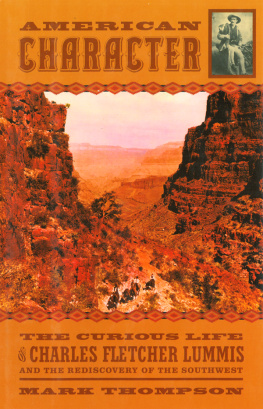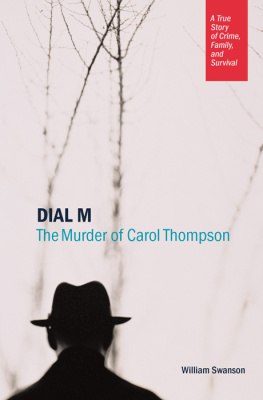Mark Thompson - Leatherfolk: Radical Sex, People, Politics, and Practice
Here you can read online Mark Thompson - Leatherfolk: Radical Sex, People, Politics, and Practice full text of the book (entire story) in english for free. Download pdf and epub, get meaning, cover and reviews about this ebook. year: 2013, publisher: Daedalus Publishing, genre: Home and family. Description of the work, (preface) as well as reviews are available. Best literature library LitArk.com created for fans of good reading and offers a wide selection of genres:
Romance novel
Science fiction
Adventure
Detective
Science
History
Home and family
Prose
Art
Politics
Computer
Non-fiction
Religion
Business
Children
Humor
Choose a favorite category and find really read worthwhile books. Enjoy immersion in the world of imagination, feel the emotions of the characters or learn something new for yourself, make an fascinating discovery.

- Book:Leatherfolk: Radical Sex, People, Politics, and Practice
- Author:
- Publisher:Daedalus Publishing
- Genre:
- Year:2013
- Rating:5 / 5
- Favourites:Add to favourites
- Your mark:
- 100
- 1
- 2
- 3
- 4
- 5
Leatherfolk: Radical Sex, People, Politics, and Practice: summary, description and annotation
We offer to read an annotation, description, summary or preface (depends on what the author of the book "Leatherfolk: Radical Sex, People, Politics, and Practice" wrote himself). If you haven't found the necessary information about the book — write in the comments, we will try to find it.
Leatherfolk: Radical Sex, People, Politics, and Practice — read online for free the complete book (whole text) full work
Below is the text of the book, divided by pages. System saving the place of the last page read, allows you to conveniently read the book "Leatherfolk: Radical Sex, People, Politics, and Practice" online for free, without having to search again every time where you left off. Put a bookmark, and you can go to the page where you finished reading at any time.
Font size:
Interval:
Bookmark:
Daedalus Publishing Company
Los Angeles
This ebook is published by:
Daedalus Publishing
2807 W. Sunset Blvd
Los Angeles, CA 90027
First edition: November 1991, with ISBN 1-55583-186-9
First paperback edition: September 1992, with ISBN 1-55583-187-7.
Second edition: June 2001, with ISBN 1-55583-630-5
Third edition: July 2004, with ISBN 1-881943-20-8
Ebook edition: June, 2013 with ISBN 978-1-938884-00-9
Library of Congress Cataloging-in-Publication Data
Leatherfolk: Radical Sex, People, Politics, and Practice, Edited by Mark Thompson
Originally published: Boston: Alyson Books, 1991.
Includes bibliographical references.
ISBN: 978-1-938884-00-9
1. ___Leather Life Style (Sexuality)-United States.
2. Homosexuality-United States.
I. Title: Leatherfolk.
II. ___Thompson, Mark, 1952
Credits
Excerpt from Pigman by Robert Chesley, Copyright 1986, used by permission of Nicholas Deutsch, literary executor for the Estate of Robert Chesley.
"The View From A Sling," by Geoff Mains previously appeared in Drummer 121 (1988).
The following articles have also appeared in Drummer in different form:
"Artist Chuck Arnett: His Life/Our Times" By Jack Fritscher;
"The Catacombs: A Temple of the Butthole" by Gayle Rubin;
"Black Leather Wings" by Mark Thompson;
"The Spiritual Dimensions of Bondage" by Joseph W. Bean;
and "Magical Masochist: A Conversation With Fakir Musafar" by Joseph W. Bean.
Cover design by Steve Diet Goedde
This book is dedicated to the memory of...
David Armstrong
Chuck Arnett
Robert Chesley
Tony DeBlase
Barry Douglas
Leonard Dworkin
Tom of Finland
Steven Maidhof
Geoff Mains
Michael McAdory
Dom "Etienne" Orejudos
John Preston
Henry Romanovsky
Cynthia Slater
Alexis Sorel
Jack Stice
David Weinbaum
...and all the other builders of community and understanding who are no longer here.
by Scott Tucker
by Carol Truscott
by Geoff Mains
by Dorothy Allison
by Tina Portillo
by Michael Bronski
by Robert H. Hopke
1940s:
by Samuel M. Steward
1950s:
by Thom Magister
1960s:
by Jack Fritscher
1970s:
by Gayle Rubin
1980s:
by David Stein
1990s:
by Mark Thompson
by Guy Baldwin
by Eric E. Rofes
by Wickie Stamps
by Arnie Kantrowitz
by John Preston
by Pat Califia
by Geoff Mains
by Rev. Troy D. Perry
by Gabrielle Antolovich
by Joseph W. Bean
by Dianna Vesta
by Stuart Norman
by Mark Thompson
by Ganymede
by Joseph W. Bean
It was spring 1990, and publisher Sasha Alyson called to ask if I'd be interested in compiling a book about the queer leather underground. With the AIDS epidemic at full roar, this most transgressive of gay subcultures was being challenged on several fronts. Many of its participants had been among the first flush of casualties in the plague; the community itself was increasingly under attack by censors from both within and outside the gay movement.
At a time of apparently narrowing options and widening panic about gay lifeindeed, the very life of gaysissues of sexual extremism and erotic variance were in high suspect. Critics asked: Hadn't gay people somehow brought this terrible plague upon themselves because of their supposedly weird and often incomprehensible acts? The freewheeling, take-it-to-the-limit attitude of the 1970s and early '80s had pushed many boundaries, broken nearly every taboo. What was left? Now that the previous rules of order and decorum lay in disarray, shouldn't there be a price to pay? Old notions of morality, even in the minds of those who'd upset them, were recirculating like tainted ghosts.
It seemed a good time to take on such knee-jerk revisionism, the kind of shame-and-blame finger-pointing the modern gay movement had worked so hard to overcome during the previous three decades. From my vantage as a longtime editor at The Advocate, one of the nation's largest gay publications, I took a close, hard look. It occurred to me that what had been marked as excessive or at fault was perhaps no more than a necessary stage of behavior and identity formation in the liberation process. No one can ever really say how much is "too much" on the path of freedom until the farthest reaches have been touched.
People both in and into leather were among the sexual revolution's avant-garde: compelled voyagers, courageous in a way, no more or less responsible for the current calamity than anyone else. There was no escaping the grim reality, however, that the collective sense of community that self-identified leathermen and leatherwomen had worked so hard to achieve from the 1950s on was at risk, perhaps even more so than individual lives. Preserving historical aspects of the scene, while sorting through and taking stock of the rest, struck me as a worthwhile task.
Today, the leather community has a vital new sense of itself. Like a forest after a catastrophic fire, it has regrouped at a startling pace: Hundreds of leather-oriented groups and organizations, publications, and Web sites exist around the world. Old questions and doubts about the legitimacy of the leather experience have changed as well. A once secret and highly codified domain is now a widely adopted lifestyle choice as past private preferences of a few become practiced by many. Meanwhile, ongoing classes, conferences, and contests pertaining to leather sexuality further enhance our understanding and acceptance of erotic difference.
It amazes me how much information is readily available. Ten years ago, Leatherfolk was among a very narrow selection of literature available on the subject. Now there are shelves of books addressing every facet of radical sexuality, ranging from the practical to the philosophical. Society's attitude is more tolerant too, growing from reflex revulsion to a cautious curiosity, as mass media and fashion continue to appropriate leather icons and imagery for their own purposes. Thus are the outer limits of yesterday transmogrified into the insider chic of tomorrow.
Such liberalized views of sexual diversity do not rest well with everyone, of course. Cultural conservatives, increasingly inhibited from wholesale queer bashing, narrow their target by distinguishing between "good" and "bad" gays, the former being the nice same-sex couple next door, the latter demonized as the perverts in leather on the streets. Within the gay community itself, old guard leathermen grumble about the loss of authenticity, while commentators elsewhere nitpick on a scene that seems ever-more about style over substance. The adaptation of a New Age tribal identity by many contemporary players is also questioned as a misguided attempt to graft greater meaning onto mundane acts. The use of such terms as "urban aboriginal," "modern primitive," and "leatherfolk" (which this book coined) is seen as a peculiar and unnecessary defense of one's sexual proclivities.
But, as I think the contributors to this book make abundantly clear, radical sexuality contains rich possibilities for personal reinvention and empowerment really only known to those who practice it. Without this honesty, leather remains too much an affectation or vogue, or is too easily left to others to label as a pathology or social aberration. The people in this book are pathfinders who have left trail markers in the form of their writings. As one author here relates: "Those who experience [these] rites of passage...and
Font size:
Interval:
Bookmark:
Similar books «Leatherfolk: Radical Sex, People, Politics, and Practice»
Look at similar books to Leatherfolk: Radical Sex, People, Politics, and Practice. We have selected literature similar in name and meaning in the hope of providing readers with more options to find new, interesting, not yet read works.
Discussion, reviews of the book Leatherfolk: Radical Sex, People, Politics, and Practice and just readers' own opinions. Leave your comments, write what you think about the work, its meaning or the main characters. Specify what exactly you liked and what you didn't like, and why you think so.









